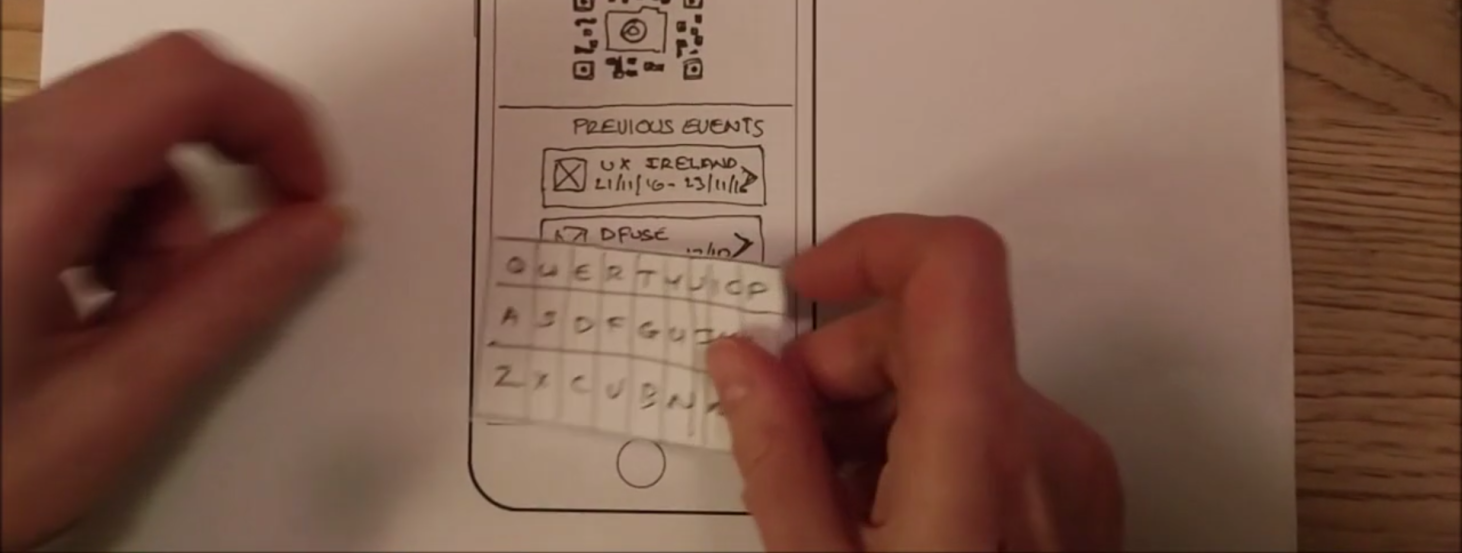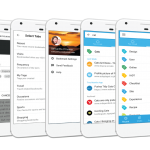Human-Centered Design Project
Project Context, Background and Aim:
Identify a problem in an existing interface or choose an activity which has not yet been addressed by an app, website, etc. Carry out research to gain an understanding of the human and the tasks they need to perform. Based on this, design a paper prototype of an application, or part of an application, to better address the problem at hand.
Our team (Gordon , Karen and I) chose an an activity which had not yet been addressed by an app that we were aware of, over a problem with an existing interface, for our design project.
The first stage of this group project was Ideation – the forming of ideas or concepts.
To maximise the number of ideas generated, and to avoid groupthink, or a situation where one member of the team might dominate the process, we agreed to develop three ideas each, in parallel.
Our ideation process was to use a design charettes-type approach:
- Each team member would list their idea, along with the problem hypothesis
- We would detail our solution ideas
- Together as a group, we would critique each others’ design ideas
- We would identify the concepts we wanted to keep
- Based on group feedback, we would discuss the good concepts, to come up with the next better concept
- Finally, together as a group, we critiqued these concepts and voted on which idea to carry forward
The ideas submitted by each group member, were as follows:
Gordon
- Improving the Irish Rail Ticket Kiosks (Problem hypothesis – Irish Rail Customers find the exisiting UI of ticket kiosks difficult to understand/navigate) Assessment of the existing ticket kiosk UI to identify problems with purchasing speciality tickets.
- Conference app – (Problem hypothesis – Audience members of demos/talks/presentations find it difficult to ask questions in a non obstructive manner, also, presenters struggle to address audience questions at a time in their talk that suits best.) Where the audience of a demo/talk/presentation can submit questions to the host (in a non-interrupting way). The host can then view the list of questions and answer them as part of the demo or can answer them later on.
Karen
- Splitting a bill in a restaurant amongst a large group. (Problem hypothesis -When sharing a meal/group event, people find it difficult to evenly divide costs & pay the bill) – An app that would allow users split their restaurant bills more easily.
- Hiring freelancers. (Problem hypothesis -People struggle to hire freelance trusted professionals across industries, that are within the price range. ) An app that would allow the user find and hire freelancers
- An app for Dementia Patients & their families. (Problem hypothesis -Family members & caregivers of Dementia patients & elderly people encounter practical problems such as rota management/medicine tracking/updates) At a very basic level, an easily customsiable photo/story book app that could be used either as talking points with a dementia patient, or as a visual aid with a patient could provide comfort. Beyond that, there would be scope for a time management/rota management tool and a daily update alert that could be sent across caregivers/family members.
Cormac
- Uber-like beauty services app – (Problem hypothesis – People struggle to find freelance trusted, nearby beauty professionals). This functionality of this app would be similar to Uber, but adapted to work for beauty services. Users would be able to search for and hire nearby service providers
- Expert local-knowledge app – (Problem hypothesis -There is currently no streamlined way for local experts to share their expert knowledge with others, or to learn from local experts) This app would allow users share their knowledge, or learn from local experts – for example local tour guides created by a local expert, for visitors
- Feedback services for the hospitality industry – (Problem hypothesis -People within the hospitality industry find it difficult to get immediate feedback from patrons) The app would be used by businesses in the hospitality industry to gather instant feedback from customers using their services
Karen’s Freelancer App, and my own Uber-type app were similar, they both addressed the issue of finding service providers locally, so we decided to merge them for the sake of further exploration.
After feedback (PDF) and discussions, we shortlisted the number of ideas to three, these were the ideas we wanted to bring forward to the next round, when we would vote on our preferred ideas.
The ideas shortlisted were:
- Freelancer App
- Dementia/Family Care App
- Conference App
I felt the freelance app, given the complexity of the idea, and time constraints, was outside scope, so this got my third vote.
Although I felt the dementia app had a lot of potential, I was concerned we would not be able to find enough suitable research subjects to provide conclusive feedback, this got my second vote.
The conference app seemed to fit the scope of the project, and I thought we would have a good pool of research subjects, so this got my first vote.
The group vote was taken, Gordon voted in the same order as I had, which resulted in the conference app being chosen.
In discussions that followed, we were concerned about the breadth of appeal a conference app would have – limiting the app to conference goers, would possibly limit the number of potential users, and potential research subjects. As a result of these discussions we decided to broaden the scope of the app, so that potential uses could be anywhere there is an audience and a moderator or speaker – including television and radio – and we altered the problem definition to address audience engagement in general.
Problem Definition / Statement
We identified out problem definition / statement as
“During a live audience event (eg: a demo, meeting, conference talk, tv programme) it can often be difficult for an audience member to engage with the presenter in a non obtrusive manner. A potential solution for this would be to provide an application that would allow audience members and the presenter interact with each other without upsetting the flow of the event.”
References
Problem Statements and Design Goals – Fluid – Fluid Project Wiki. (2017). Wiki.fluidproject.org. Retrieved 5 November 2016, from https://wiki.fluidproject.org/display/fluid/Problem+Statements+and+Design+Goals
Ideation (creative process). (2017). En.wikipedia.org. Retrieved 5 November 2016, from https://en.wikipedia.org/wiki/Ideation_(creative_process)
Design ideation: the conceptual sketch in the digital age. (2017). Sciencedirect.com. Retrieved 8 November 2016, from http://www.sciencedirect.com/science/article/pii/S0142694X05000189
What is…Ideation?. (2017). The Interaction Design Foundation. Retrieved 4 November 2016, from https://www.interaction-design.org/literature/article/what-is-ideation
How to come up with great UX ideas – UXM. (2017). UXM. Retrieved 6 November 2016, from http://www.uxforthemasses.com/great-ux-ideas/


